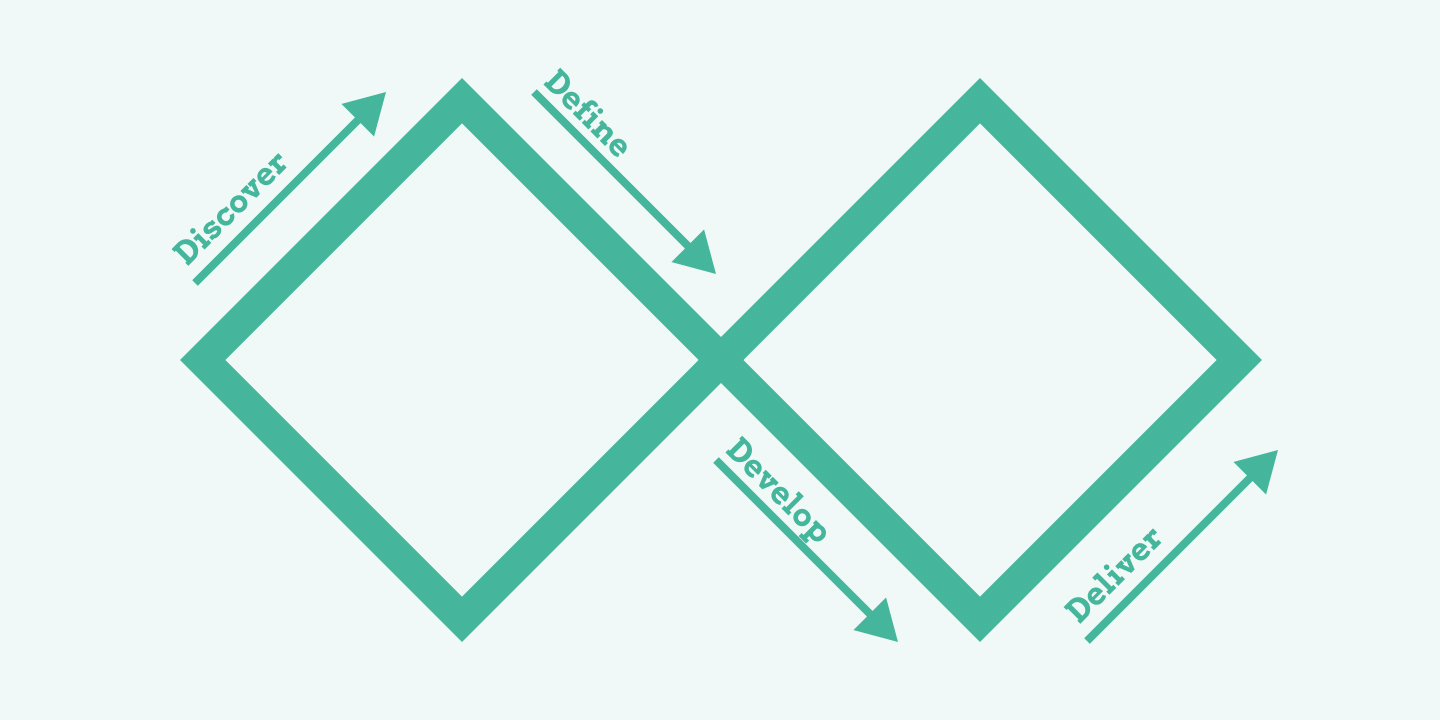What is the double diamond approach?
You can divide the double diamond approach into four phases, with each diamond holding two of the phases. As mentioned, the diamonds symbolize the divergence and convergent movement during a project.

If you search online for the double diamond method, you'll notice multiple names for each diamond. But don't be alarmed; the idea behind each diamond remains the same regardless of the labels you find online.
In most cases, the first diamond is called the define or discover diamond. The second one is most often named after the development, design, or delivery phase you find within that diamond.
The phases used in the double diamond way of working are discover, define, develop, and deliver. Here's a summary of how a typical double diamond project takes place.
1️⃣ Discover and define
You start with discovering the problem at hand. Someone has hired you to solve a problem, after all. You also get to know the users involved with said problem.
At this stage of the double diamond, anything is possible. You're not familiar with the problem, and that needs to change. Because of that, you diverge by talking to as many users as you can. At the same time, you read reports, debriefs, and any other relevant document you can get your hands on.
In the second half of this diamond, you start to converge by sorting through all the raw data you've collected. Ask yourself what's valuable and what isn't. You can do this by facilitating a workshop or a problem synthesis session.
Remember, some of your discoveries might be useful but not within the scope of your project. That can happen. Common techniques used within the first diamond include design thinking workshops, how-might-we exercises, and multiple UX research methods.
2️⃣ Develop and deliver
The result of the first diamond is either a problem statement or a design challenge. And that's how you start the second diamond. At this moment, it is time to diverge again.
There are endless ways of solving the design challenge you've just discovered. Some are obvious, and there are probably a few hidden gems as well.
As a start, you can host another workshop. But instead of finding as many insights as possible, you focus this workshop on generating potential solutions for the design challenges you already know.
Other ways of generating ideas include brainstorming sessions and designing a lot of sketches.
In the final phase of design thinking, you converge again by validating your ideas. Some ideas might fail because of technical constraints, while others fail to pass your user test. As a result, you will end up with one or a hand full of validated ideas that you can deliver.
Is double diamond part of design thinking?
Double diamond is not a part of design thinking. However, it relates to design thinking because it follows similar steps to design a user-centered solution to a business problem. Therefore, it is a variation of design thinking.
What is the difference between double diamond and design thinking?
Double diamond and design thinking are closely related. The main difference is the number of phases and iterations. The double diamond method has four steps, and design thinking has five.
In addition, design thinking is a repeating process, while the double diamond method usually only has one iteration of both diamonds. Once you've gone through both diamonds, you've completed your design project.
Share
×Twitter
Page link
https://www.uxdictionary.io/double-diamond
Copy